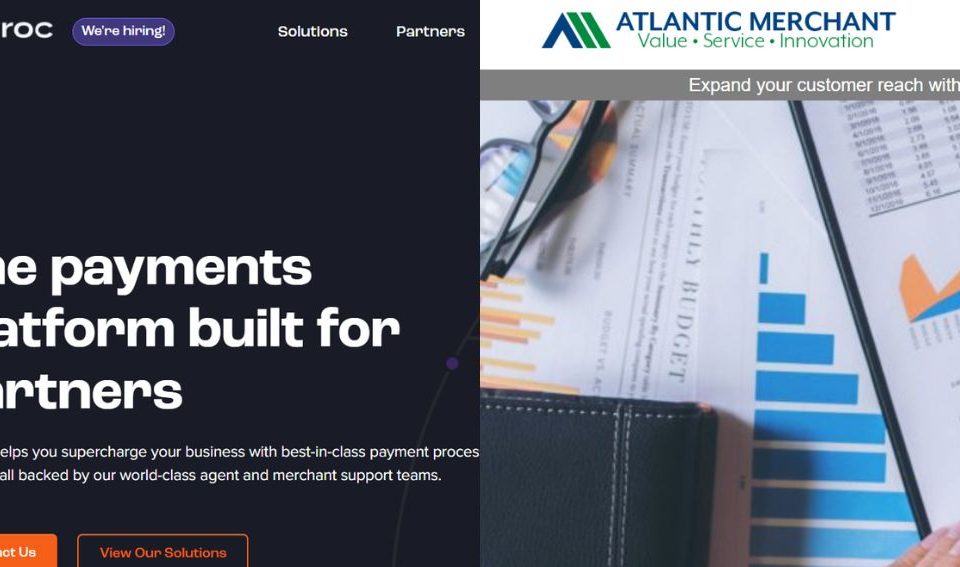11 Biggest Mergers and Acquisitions in History

Definition of Investment Banking Courses
February 18, 2023
Conglomerate Merger: Definition, Examples, Best Practices
March 1, 2023Mergers and acquisitions (M&A) have been a common feature of the business world for many years, with companies combining forces to create larger, more efficient organisations. While there have been many notable deals over the years, some stand out as the biggest in history. With M&A activity showing no signs of slowing down, we will likely continue to see major deals that reshape the business world for years to come.
Since 2010, more than 500,000 mergers and acquisition (M&A) deals have been completed globally. Although the annual figure has fluctuated over the years, there has been an overall increase, with more than 63,000 deals completed in 2021.
Several of the most substantial mergers and acquisitions in history include:
1. Bristol-Myers Squibb and Celgene merger (2019) – $95B.
In 2019, pharmaceutical companies Bristol-Myers Squibb and Celgene announced a merger valued at $95 billion, creating one of the largest pharmaceutical companies in the world. The merger brought together two well-known brands with a broad portfolio of products, ranging from cancer drugs to immunology therapies.
The new company, Bristol Myers Squibb, became a major player in the pharmaceutical industry, with a strong focus on research and development. The merger also allowed the company to achieve greater scale and efficiency and expand its presence in key global markets.
The merger faced some opposition from shareholders, who were concerned about the high price paid for Celgene and the potential risks associated with integrating the two companies. However, the deal was ultimately approved and completed in November 2019.
Since the merger, Bristol Myers Squibb has continued to invest in research and development, focusing on innovative treatments for cancer, immunology, and other diseases. The company has also faced challenges, such as increased competition and the impact of the COVID-19 pandemic on its operations. Nonetheless, it remains a significant force in the pharmaceutical industry, with a range of well-known brands and a commitment to innovation and patient care.
2. Heinz and Kraft merger (2015) – $100B.
In 2015, food and beverage companies H.J. Heinz and Kraft Foods Group announced a merger valued at $100 billion, creating one of the world’s largest food and beverage companies. The merger brought together two well-known brands with a broad portfolio of products, ranging from ketchup and macaroni and cheese to Oscar Mayer hot dogs and Philadelphia cream cheese.
The new company, Kraft Heinz, became the world’s fifth-largest food and Beverage Company, with operations in more than 40 countries. The merger allowed the company to achieve greater scale and efficiency and leverage its well-known brands in new global markets.
However, the merger has faced challenges recently, as Kraft Heinz has struggled to keep up with changing consumer preferences and increased competition. The corporation has also received negative feedback for its efforts to reduce costs, involving measures such as layoffs and other cutbacks. In 2019, the company wrote down the value of some of its well-known brands, including Kraft and Oscar Mayer, by more than $15 billion.
Despite these challenges, Kraft Heinz remains a significant player in the food and beverage industry, with a broad portfolio of well-known brands and a presence in key global markets. The company has also continued to invest in new products and innovations as it looks to stay ahead of changing consumer trends and preferences.
3. Glaxo Wellcome and SmithKline Beecham merger (2000) – $107B.
In 2000, pharmaceutical companies Glaxo Wellcome and SmithKline Beecham announced a merger valued at $107 billion, creating the world’s largest pharmaceutical company. The merger brought together two well-established companies with a strong presence in the pharmaceutical industry.
The new company, GlaxoSmithKline (GSK), had a broad portfolio of pharmaceutical products and a strong presence in key markets worldwide. The merger also allowed the company to achieve greater efficiencies and cost savings by combining resources and operations.
Since the merger, GSK has continued to be a major player in the pharmaceutical industry, with a range of well-known brands and a strong focus on research and development. The company has also faced challenges recently, such as increased competition and a changing regulatory environment. However, it remains a significant force in the industry and has continued to innovate in areas such as vaccines and oncology.
The merger was also notable for its impact on the wider pharmaceutical industry, as it helped to spur further consolidation and mergers among other companies. Today, the pharmaceutical industry remains highly competitive, with a few large players dominating the market and numerous smaller companies competing for market share.
4. AB InBev and SABMiller merger (2015) – $107B.
In 2015, brewing giants Anheuser-Busch InBev (AB. InBev) and SABMiller announced a merger valued at $107 billion, creating the world’s largest beer company. The merger brought together some of the most well-known beer brands in the world, such as Budweiser, Corona, and Miller Lite.
The merger faced significant regulatory hurdles, with concerns about the impact on competition in the beer industry. To address these concerns, A.B. InBev agreed to sell several of SABMiller’s brands to Molson Coors and to divest itself of certain assets in Europe, including the Peroni, Grolsch, and Meantime brands.
The merger was approved by regulators in several countries, including the United States and the European Union, and was completed in 2016. The new company, which retained A.B. InBev, controls roughly a third of the global beer market, with operations in over 50 countries.
The merger has allowed A.B. InBev to expand its global reach and to compete more effectively with other large beer companies. However, it has also faced criticism from some quarters for its impact on competition and the wider beer industry. Nonetheless, AB InBev remains a dominant force in the global beer market, with a wide range of well-known brands under its umbrella.
5. AT&T and Time Warner (2018) – $108B
In 2018, telecommunications giant AT&T announced a merger with media and entertainment company Time Warner in a deal valued at $108 billion. The merger was a significant move in the media industry. It brought together a major distributor of content (AT&T) and a major content producer (Time Warner), creating a vertically integrated company.
The merger faced significant opposition, with concerns that the combined company could have too much control over the media landscape, potentially leading to higher prices and fewer consumer choices.
Following the merger, the new company was renamed WarnerMedia, with AT&T as its parent. WarnerMedia includes several well-known brands, such as HBO, CNN, and Warner Bros. Pictures. The merger has allowed AT&T to expand its presence in the media and entertainment space and to compete more effectively with other large media companies, such as Disney and Comcast.
6. United Technologies and Raytheon- $120 billion (2019)
In 2019, United Technologies and Raytheon announced a merger to create a defence and aerospace powerhouse with approximately $120 billion market capitalization. The deal was structured as an all-stock merger of equals, with United Technologies shareholders receiving 57% of the new company and Raytheon shareholders receiving 43%.
The merger was motivated by a desire to create a more diversified and integrated aerospace and Defense Company better positioned to compete with larger rivals such as Boeing and Lockheed Martin. The new company, to be named Raytheon Technologies, would have a broad portfolio of products and services in the defense, commercial aviation, and aerospace industries.
The United Technologies-Raytheon merger is an example of a successful M&A transaction driven by a clear strategic rationale and a focus on creating shareholder value. The deal allowed the companies to leverage their complementary strengths and capabilities to create a stronger, more competitive business. The successful completion of the merger also highlights the importance of effective planning and execution in ensuring a smooth and successful integration of two large companies.
7. Dow Chemical and DuPont merger (2015) – $130B
In 2015, Dow Chemical and DuPont announced a merger valued at $130 billion, creating the world’s largest chemical company. The deal was structured as an all-stock merger of equals, with each company contributing roughly half of the new entity. The new company, DowDuPont, aimed to combine the strengths of both companies in areas such as agriculture, materials science, and specialty products.
However, the merger was just the first step in a larger plan. DowDuPont was intended to be a temporary entity split into three separate companies within two years of the merger’s completion. The first company would focus on agriculture, the second on materials science, and the third on specialty products.
The merger faced scrutiny from regulatory bodies, with concerns that the consolidation could lead to higher prices for consumers and decreased competition. However, after making some divestitures to address these concerns, the merger was approved by regulators in 2017.
The split of DowDuPont was completed in 2019, with the agriculture division becoming Corteva, the materials science division becoming Dow, and the specialty products division becoming DuPont. The new companies have since continued to operate in their respective focus areas, with Dow focusing on materials science and DuPont focusing on specialty products.
8. Verizon and Vodafone – $130 billion (2013)
In 2013, Verizon Communications acquired Vodafone’s 45% stake in Verizon Wireless for $130 billion in one of history’s largest mergers and acquisitions deals. The acquisition gave Verizon full control of its wireless unit, which was already the largest wireless carrier in the United States. The deal was driven by Verizon’s desire to expand its network and services and gain greater control over its future growth and strategic direction.
On the other hand, Vodafone was looking to divest its stake in Verizon Wireless to focus on its core business in Europe, where it was facing increasing competition and regulatory challenges. The sale of its stake in Verizon Wireless gave Vodafone a significant cash windfall to invest in its European operations and pay down debt.
The $130 billion price tag for the Verizon-Vodafone deal made it one of history’s largest mergers and acquisitions. It had significant implications for both companies and the wider telecommunications industry. For Verizon, the acquisition gave it full control over one of its most important assets, allowing it to pursue new growth opportunities and strategic initiatives. For Vodafone, selling its stake in Verizon Wireless allowed it to refocus its efforts on its core business and shore up its financial position.
9. AOL and Time Warner – $165 billion (2000)
In 2000, AOL and Time Warner announced a $165 billion merger to create a media and internet powerhouse. At the time, the deal was hailed as a transformative event that would reshape the media landscape, with AOL bringing its internet expertise and massive user base to Time Warner’s vast array of media assets.
However, the merger ultimately proved to be a disaster, with the two companies failing to integrate their operations effectively and grappling with cultural differences and strategic missteps. The deal was also done at the height of the dot-com bubble, with many analysts and investors questioning the high valuation of AOL.
The merger’s aftermath was marked by a series of writedowns, management shake ups, and lawsuits, with both companies spinning off various assets and refocusing their operations. The deal is often cited as one of the worst in corporate history, with some estimates suggesting that it cost shareholders as much as $200 billion in lost value.
The AOL-Time Warner merger is a cautionary tale for companies considering major M&A deals. Integrating two large companies with different cultures and strategies is a complex and challenging undertaking, and such a deal’s risks and potential pitfalls should not be underestimated. Successful M&A transactions require careful planning, clear strategic objectives, and a focus on creating value for shareholders and stakeholders.
10. Gaz de France and Suez (2007) – $182B
In 2007, the French government announced a merger between Gaz de France (GDF) and Suez, valued at approximately $182 billion. The merged entity would be named GDF Suez and create one of the world’s largest energy companies with electricity and natural gas operations.
The merger was a complex transaction that involved the French government, which owned a majority stake in GDF, and several other stakeholders. The deal was initially met with some resistance from Suez shareholders, who felt that the offer undervalued the company, but it was eventually approved.
The merged company, GDF Suez, operated under this name until 2015, when it was renamed Engie. Engie is a global energy company focusing on low-carbon power generation, natural gas, and energy services. The company is headquartered in France and operates in over 70 countries worldwide.
11. Vodafone and Mannesmann – $202.8 billion (1999)
In 1999, Vodafone made a $202.8 billion hostile takeover bid for Mannesmann, a German telecommunications company, in the largest M&A deal in history. The deal was motivated by Vodafone’s desire to gain a foothold in the European market and to expand its wireless operations globally. Mannesmann was a leading mobile operator in Germany, Italy, and other European markets, and its acquisition would have given Vodafone a significant presence in these markets.
The takeover bid was initially resisted by Mannesmann, with its CEO, Klaus Esser, arguing that the company could achieve greater value for shareholders by remaining independent. However, Vodafone persisted with its bid, and in early 2000, it successfully acquired Mannesmann in a deal that sent shockwaves through the telecommunications industry.
The Vodafone-Mannesmann deal was notable for its size and the hostile nature of the takeover bid. It also highlighted the growing importance of the telecommunications industry as companies looked to expand their operations and gain market share on a global scale. The deal also had significant implications for the European telecom market, which was going through a period of consolidation as companies sought to position themselves for growth and increased competition.
Final Thoughts
Mergers and acquisitions are common in the business world and can have significant implications for companies, industries, and the global economy. These deals can create larger, more efficient organisations better equipped to compete in an increasingly complex and interconnected business environment. However, they can also be risky, and not all mergers and acquisitions lead to success.




